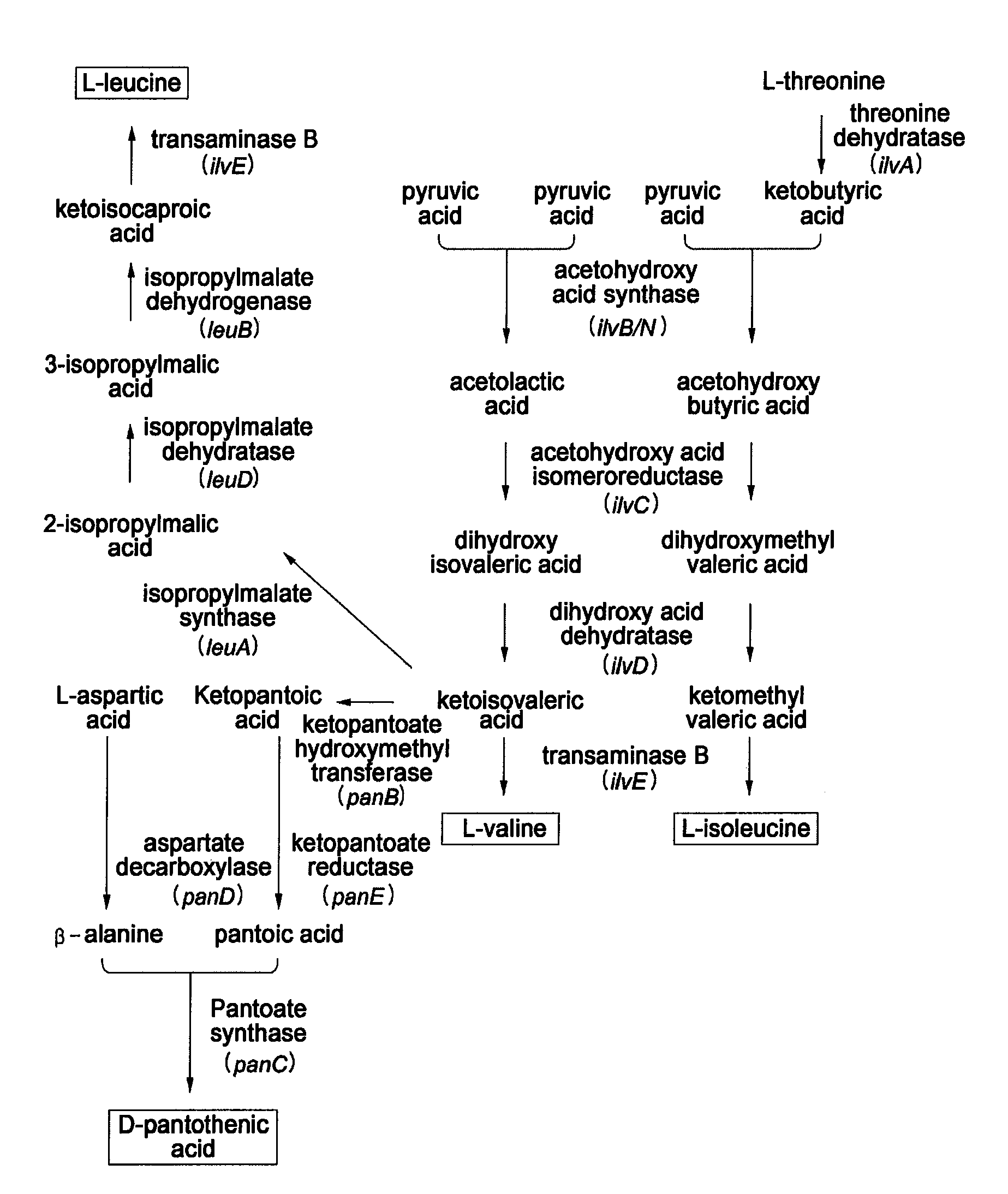Microorganism having enhanced L-valine productivity and method for producing L-valine using the same
a technology of l-valine and microorganisms, which is applied in the direction of microorganisms, biochemical equipment and processes, bacteria based processes, etc., can solve the problems of difficult industrial fermentation and difficult production of branched-chain amino acids by industrial fermentation
- Summary
- Abstract
- Description
- Claims
- Application Information
AI Technical Summary
Benefits of technology
Problems solved by technology
Method used
Image
Examples
example 1
Selection of Mutant Strain by Artificial Mutagenesis
[0030]To obtain mutant strains having an enhanced L-valine productivity, mutation of a microorganism was induced using the following method.
[0031]Specifically, a parental strain, glutamic acid-producing Corynebacterium glutamicum KFCC-10661 (Korean Patent Publication No. 1990-0007948), which had been previously activated by cultivation on an activation medium for 16 hours, was cultivated for 14 hours on a seed medium that was sterilized at 121° C. for 15 minutes. Then, 5 mL of the culture medium was collected and washed with 100 mM citrate buffer. NTG (N-Methyl-N′-nitro-N-nitrosoguanidine) was added thereto at a final concentration of 200 mg / L. After 20 minutes, the medium was washed with 100 mM phosphate buffer. The strains treated with NTG were spread on a minimal medium and the death rate was measured. As a result, the death rate was 85%.
[0032]In order to obtain mutant strains having a common resistance to α-aminobutyric acid (A...
example 2
Examination of L-Valine Productivity of L-Valine-Producing Mutant Strain
[0041]The Corynebacterium glutamicum CA08-0072 (KCCM11201P) having a common resistance to high concentrations of ABA, AHV, TA, and NV, which was obtained in Example 1, was cultured by the following method, in order to examine its L-valine productivity.
[0042]The parental strain Corynebacterium glutamicum KFCC 10661 and the mutant strain were inoculated into 250 ml-corner baffle flasks containing 25 ml of the seed medium and cultured at 30° C. for 20 hours with shaking at 200 rpm to obtain seed culture media. Thereafter, 1 ml of each of the seed culture media was inoculated into a 250 ml-corner baffle flask containing 24 ml of the following production medium, and cultured at 30° C. for 72 hours with shaking at 200 rpm to produce L-valine.
[0043]The production medium used in the present Example 2 has the following composition.
[0044]
[0045]Glucose 5%, Ammonium Sulfate 2%, Potassium Dihydrogen Phosphate 0.1%, Magnesium...
PUM
| Property | Measurement | Unit |
|---|---|---|
| temperature | aaaaa | aaaaa |
| concentration | aaaaa | aaaaa |
| resistance | aaaaa | aaaaa |
Abstract
Description
Claims
Application Information
 Login to View More
Login to View More - R&D
- Intellectual Property
- Life Sciences
- Materials
- Tech Scout
- Unparalleled Data Quality
- Higher Quality Content
- 60% Fewer Hallucinations
Browse by: Latest US Patents, China's latest patents, Technical Efficacy Thesaurus, Application Domain, Technology Topic, Popular Technical Reports.
© 2025 PatSnap. All rights reserved.Legal|Privacy policy|Modern Slavery Act Transparency Statement|Sitemap|About US| Contact US: help@patsnap.com



